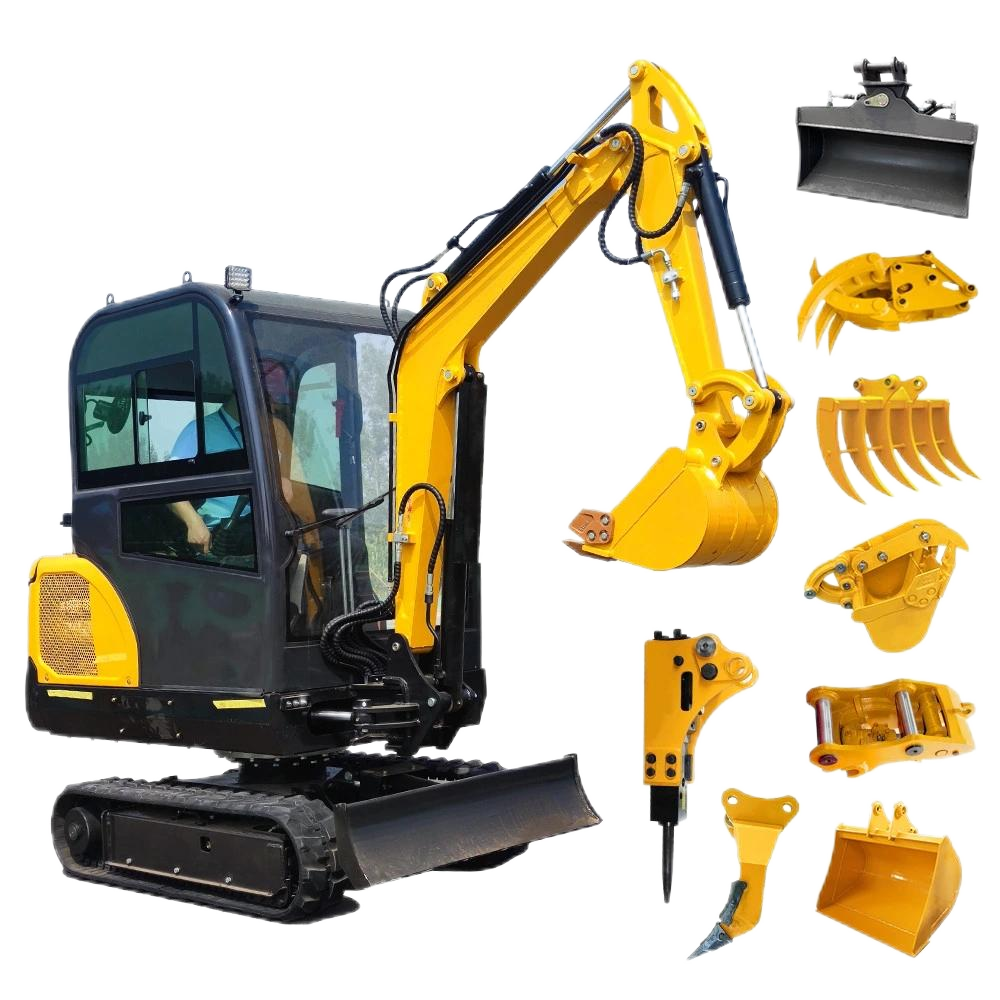3-ton excavators (usually referring to small excavators with an operating weight of around 3 tons) play an important role in various scenarios due to their characteristics such as compact size, high flexibility, and easy operation. They are especially suitable for narrow spaces, precise operations, or small-scale engineering needs. The following are their main application fields and specific operation contents:

I. Small-scale Engineering and Infrastructure
- Rural renovation: Such as excavation of foundations for rural houses, leveling of house sites, construction of small drainage ditches, widening of village roads, and trimming of roadbeds.
- Municipal maintenance: Renovation of urban sidewalks, shallow excavation and backfilling of underground pipelines (such as water supply pipes and cables), and earthwork treatment around small inspection wells.
- Site cleaning: Cleaning up debris (stones, muck) on the site before construction, or crushing and transporting the ruins after the demolition of small buildings.
II. Agriculture and Gardening
- Agricultural operations:
- Farmland arrangement: Renovation of cultivated land, construction of field ridges, excavation of irrigation ditches (1-2 meters in width and 0.5-1 meter in depth).
- Fruit tree planting: Excavation of fruit tree pits (0.5-1 meter in diameter and 0.6-1 meter in depth), and trimming of roads in orchards.
- Fishpond transformation: Desilting of small fishponds, reinforcement of pond ridges, or adjustment of earthwork in aquaculture areas.
- Landscaping:
- Landscape modeling: Creation of micro-topography in parks (such as small mounds, flower bed bases), and leveling of earthwork in green belts.
- Tree transplanting: Excavation of soil balls for tree roots with the cooperation of hoisting equipment, or backfilling of tree pits after transplantation.
- Weed cleaning: Cleaning up surface weeds and roots of small shrubs with the matching crushing bucket.
III. Indoor and Confined Space Operations
- Interior decoration: Excavation of indoor floors, foundation reinforcement in low-rise buildings (such as villas, warehouses), or transportation of construction waste after demolition of non-load-bearing walls (attention should be paid to the impact of weight on the floor slabs).
- Basement/garage: Excavation of earthwork in small basements, construction of drainage ditches, or crushing and cleaning of concrete after damage to garage floors.
- Narrow areas: Such as excavation of equipment foundations in factory workshops, trimming of earthwork in roadways, or assistance in pipeline laying when the distance between buildings in residential areas is small.
IV. Auxiliary and Precision Operations
- Material handling: Grabbing small materials such as sand, bricks, and wood with the matching grab bucket, or short-distance transfer of earthwork (replacing manual wheelbarrows to improve efficiency).
- Crushing operations: After installing a breaker, crushing small concrete blocks, stone slabs, or road bases (usually less than 10 cm in thickness).
- Leveling and trimming: Leveling the ground of small sites (such as courtyards, parking lots), or finely trimming the corners after the operation of large excavators (to avoid omissions in "dead corners").
V. Other Scenarios
- Small mines/quarries: Assisting in stripping surface floating soil, transporting small ore blocks, or cleaning up loose earthwork around mining roads.
- Emergency rescue and disaster relief: Such as dredging of earthwork before drainage of small puddles after heavy rains, or opening up search and rescue channels in ruins in narrow areas after earthquakes.
Summary of Advantages
The core advantage of 3-ton excavators lies in being "small yet flexible": they are light in weight (usually 3-4 tons), can be transported by ordinary trailers, have low ground pressure (not easy to damage roads or lawns), and have a small turning radius (some models can rotate 360° fully). They can adapt to most small-scale earthwork operations that are difficult for manual work to complete efficiently, and at the same time reduce the rental cost of large equipment (suitable for individual owners, small construction teams, or short-term scattered projects).
However, their limitations are also obvious: the operating radius and digging depth are limited (usually the maximum digging depth is 2-3 meters), so they cannot undertake large-scale earthwork projects, and the selection should be based on the specific workload and intensity.





